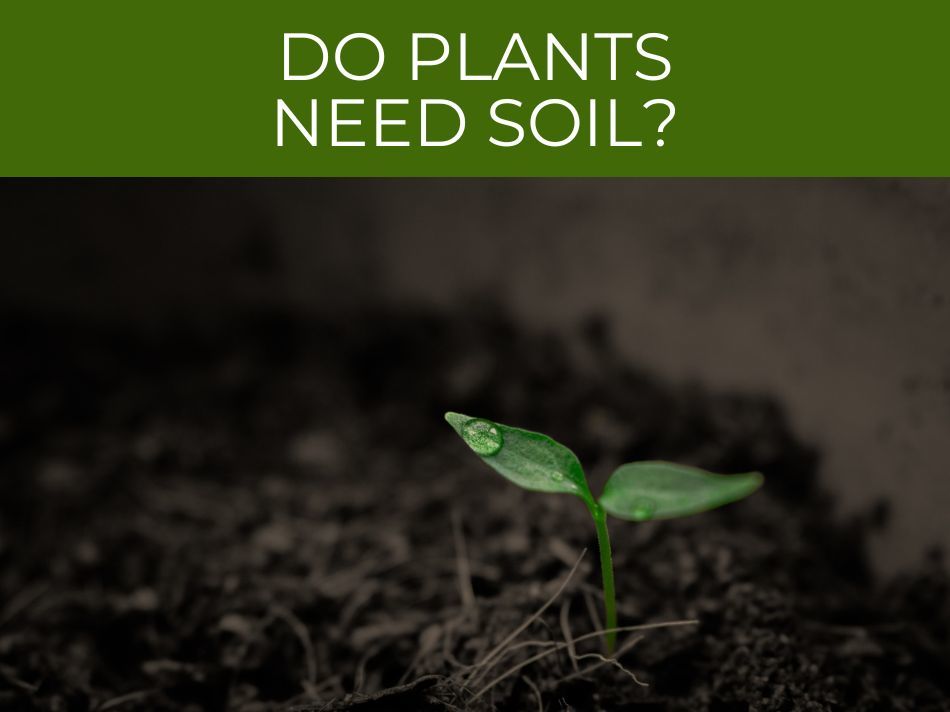We tend to take it for granted that plants grow in soil. Apart from a few water lilies, that is. Soil is definitely an important part of the growth of plants but is not all that they need.
Plants require water, carbon dioxide, light, & nutrients to grow, but plants do NOT need soil. Plant roots take in water & nutrients, & anchor plants to the ground. To grow plants without water–either via hydroponics or aeroponics–plant roots need to be able to absorb water & nutrients.
As important as soil is for the growth of plants, it is not the factor that determines growth. In fact, water is more important for growth and plants can actually be grown in water alone. Read on to find out why soil is important and how plants can be grown out of soil.
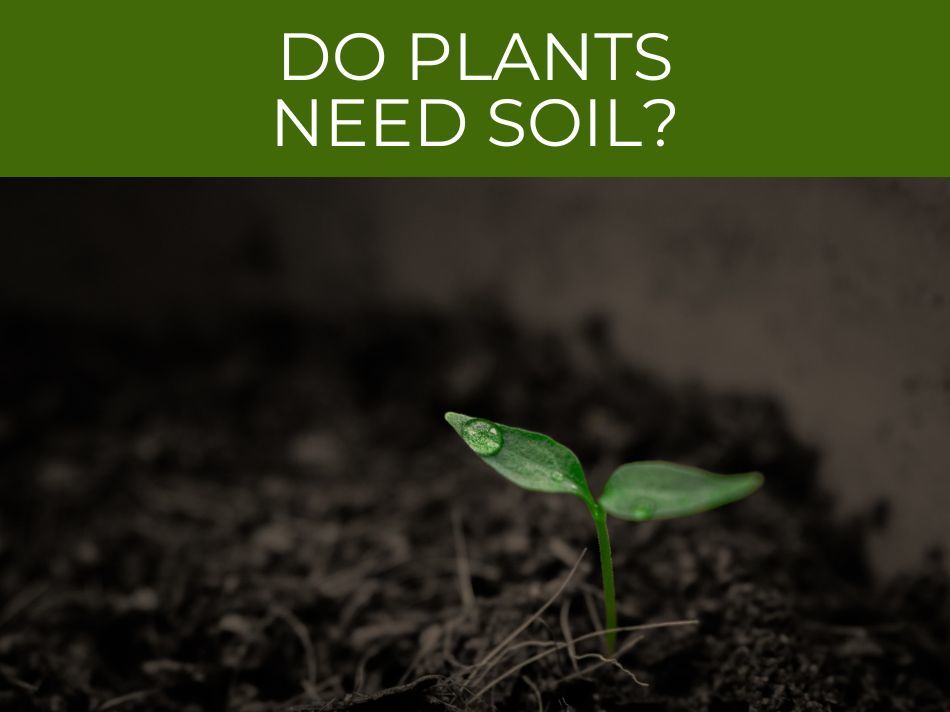
Do plants need soil?
Plants do not need soil to grow. However, plant roots absorb water & nutrients from soil, and use soil to anchor the plant. Plants can be grown without soil using a water & nutrient solution delivered to the roots.
The key to the growth of plants is energy and nutrients.
The energy comes from within the plant, through photosynthesis, but the nutrients and some water are absorbed through the soil.
The nutrients and water are held by the soil, so the plant needs the soil to grow.
Soil can suit some plants specifically and is also important for growth because it supports the plants naturally.
Check out the complete guide to top soil to use for houseplants.
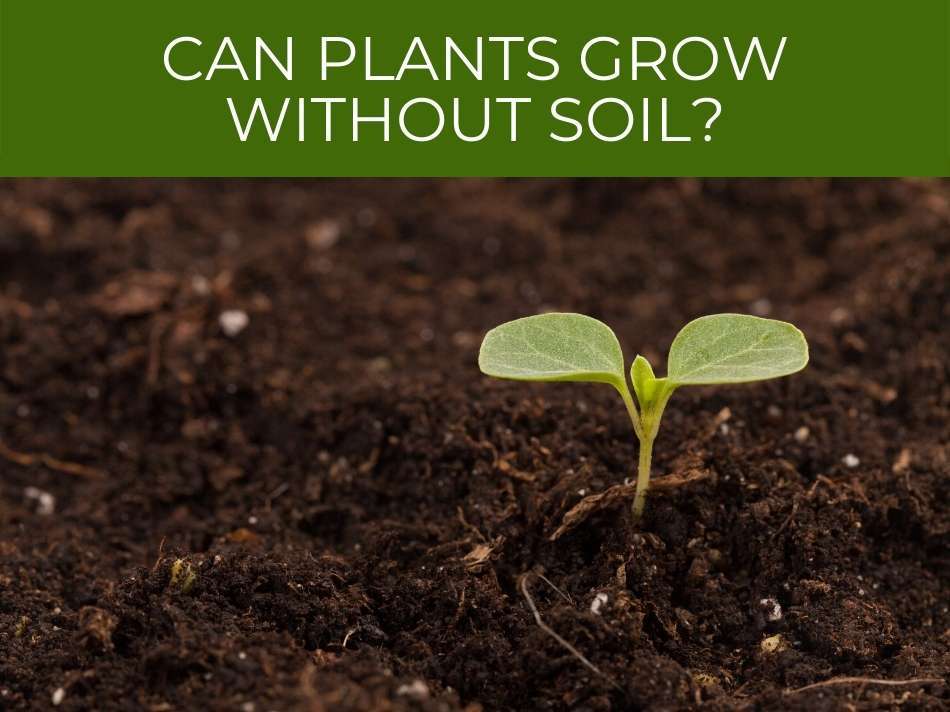
Can plants grow without soil?
Although most plants grow in soil, some specific plants grow in water or air. Using a hydroponic system, plants can be grown without soil but do need some kind of substrate or growing medium to support them.
Soil forms the substrate that supports the roots of growing plants and the place from which the roots absorb water and nutrients.
It is also possible to grow plants without soil, using a system of hydroponics.
This is when the roots of plants hang into the water, or a nutrient/water solution, from which the plants draw their nutrients.
The plants do need some form of support, which keeps them upright so they can grow.
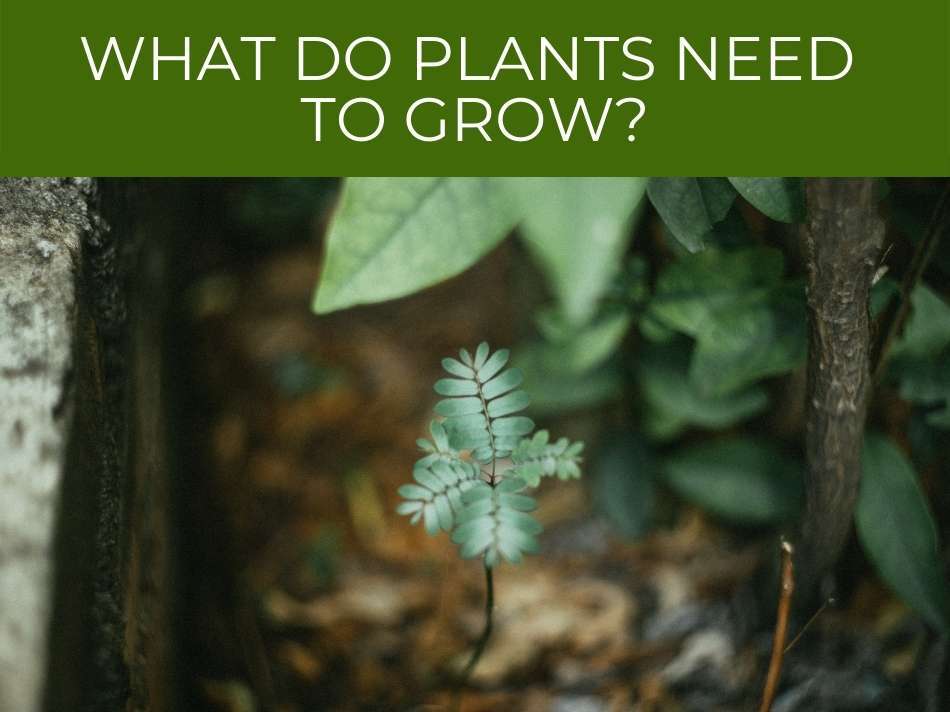
What do plants need to grow?
In order to grow, plants need water, carbon dioxide, nutrients, & light. Plants are able to produce food on their own through photosynthesis. Plants absorb more water & nutrients from the soil, but can be grown without soil as long as water & nutrients are absorbed through their roots.
Like any living organism, plants need water to grow.
Water is one of the raw materials for photosynthesis, which is the process through which plants make their own food.
They also need oxygen, carbon dioxide, and energy from the sun, as well as minerals and other nutrients.
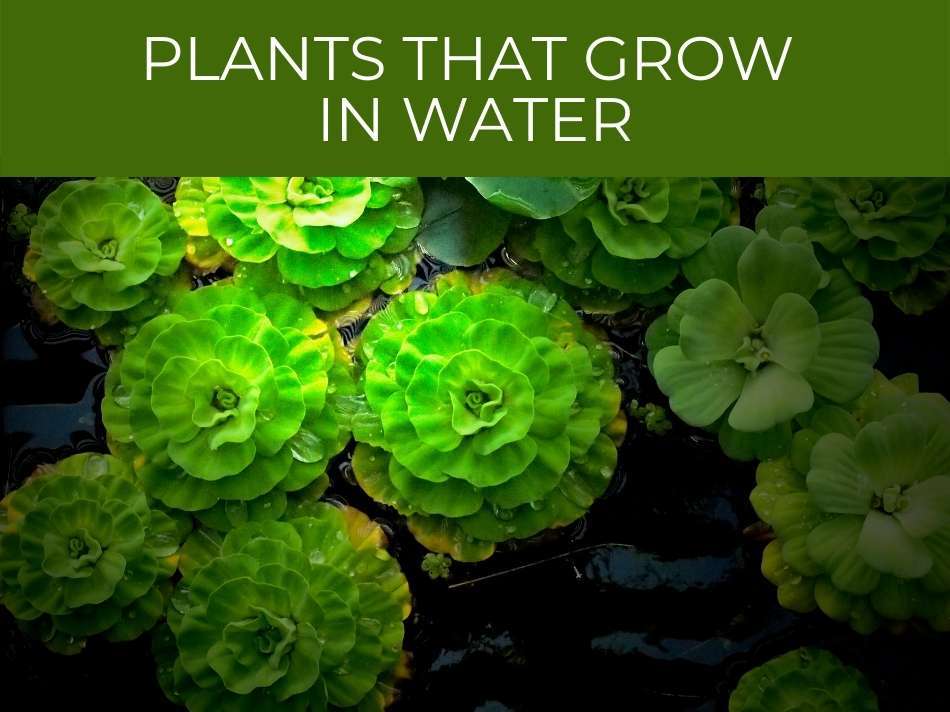
Plants that grow in water
Some plants are categorized as ‘aquatic’, because they live in water. Some of these grow underwater and others float on the surface. Common plants that grow in water include: lotus, water lily, kelp, sedges, cattails, philodendron, pothos, dieffenbachia, arrowhead, & reeds.
There are four different categories of aquatic plants, which refer to where they grow in relation to the water.
Underwater plants and floating plants actually grow in the water.
The roots of underwater plants are planted in the soil, while some floating plants have their roots in the soil and some grow completely in water.
These plants use the energy from photosynthesis and the nutrients that the roots absorb from the water to grow.
Floating plants that grow only in the water include the lotus and water lily.
It is possible to grow some plants that are usually grown in soil in water only, such as begonias and philodendrons.
They will need some kind of support if they are grown in water.
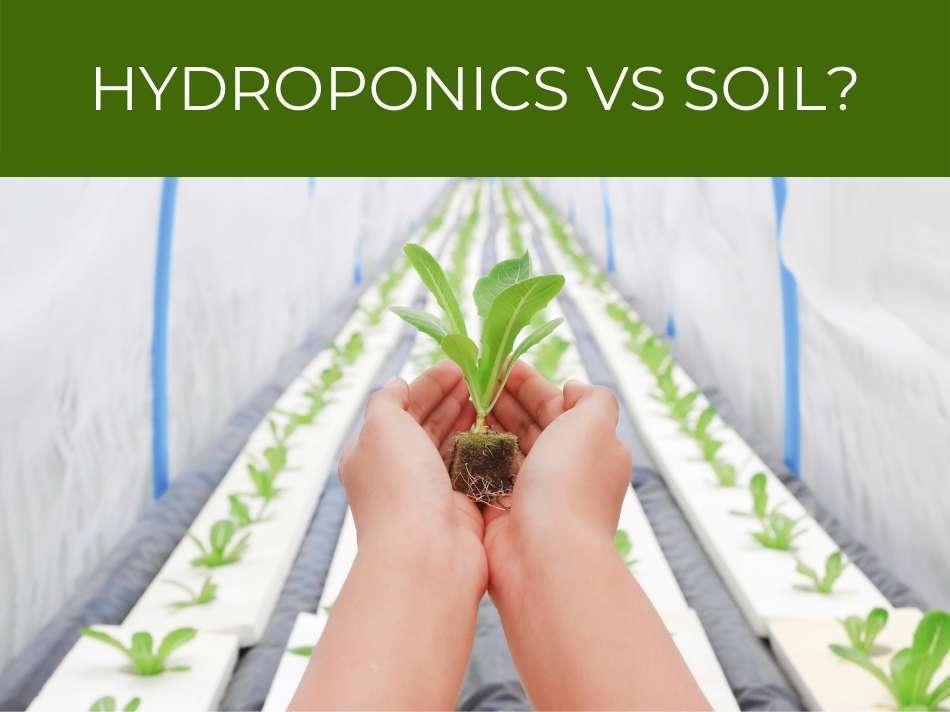
Hydroponics vs soil?
Research suggests that plants grown in hydroponics have fewer sugars, more amino acids for protein, & potentially less flavor. When grown in soil, plants may have higher glutamate levels (which provides a savory flavor). But, hydroponics allows plants to be grown indoors in controlled conditions.
Hydroponics is an alternative means of growing plants, with water as the base.
Plants are suspended in water, into which the roots extend and grow.
The plants get their nutrients mainly from the water.
Sometimes, a solution of nutrients is added to the water to ensure that the plants get all the nutrients they need.
Soil is the substrate in which plants grow naturally.
The plant roots grow into the soil and establish an anchor for the plant.
Some experimental research has shown that hydroponically-grown lettuces had fewer sugars and glutamate, which provide flavor.
Soil naturally contains nutrients and water, which plants absorb and use to grow.
Check out the complete guide to hydroponics vs. soil.
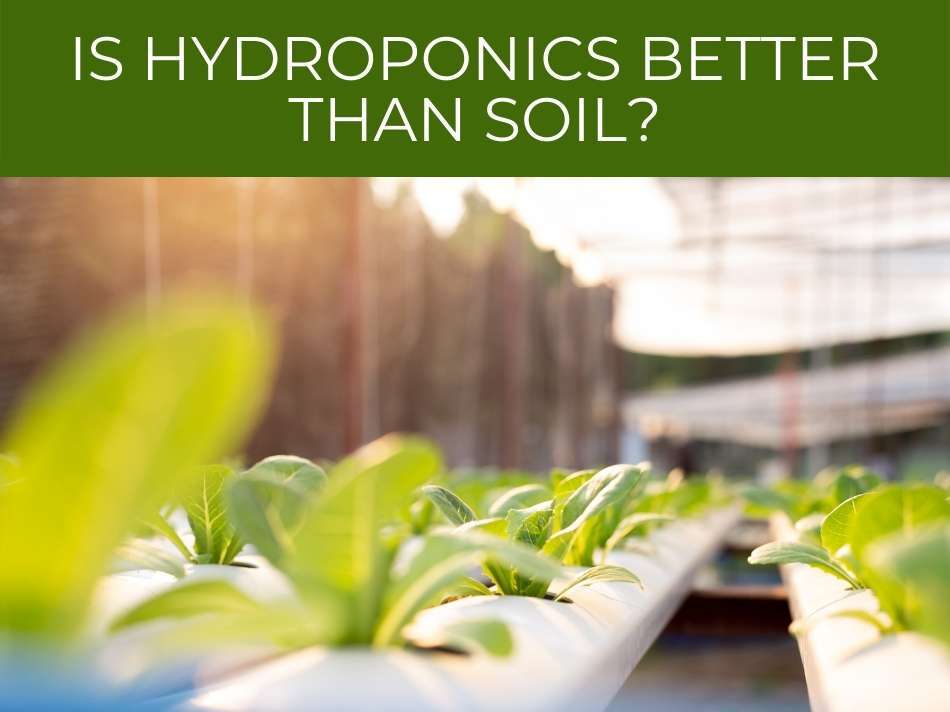
Is hydroponics better than soil?
Hydroponic systems allow plants to grow indoors, produce higher yields, & lower risk from being harmed by insects, pests, & disease. However, research suggests plants grown in soil have better flavor from increased sugars & glutamate.
A hydroponic system does not use any soil, but relies on water and can grow plants in areas where there is no soil, or very little soil.
Soil can also be of different qualities, which affects the plants that can be grown, and how well they grow.
There are pests and diseases that live in soil and which can affect plant growth, but creatures like earthworms aerate the soil, which allows nutrients and water to flow more easily.
Although soil can harbor harmful bugs, it is also able to hold a lot of nutrients, from which plants can grow.
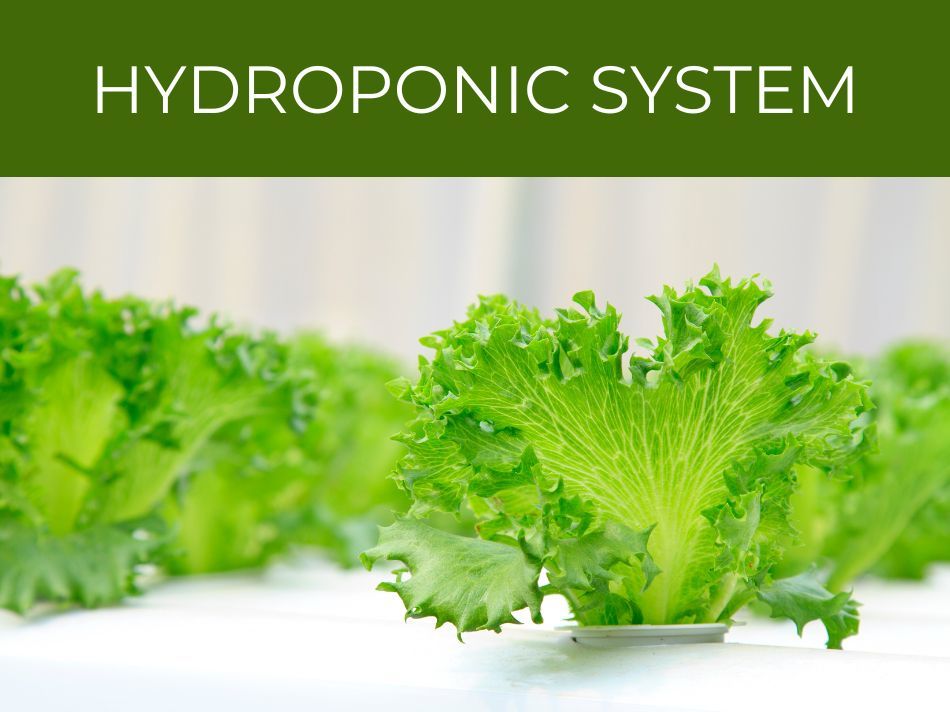
A hydroponic system avoids the question of the quality of the substrate and doesn’t carry harmful pests or diseases.
However, a hydroponic system does not collect nutrients that will help a plant to grow, so solutions are often used to supply the necessary minerals.
Hydroponics allows plants to be grown in areas that have little or no soil, or where the land is not arable.
See if you can grow anything with hydroponics.
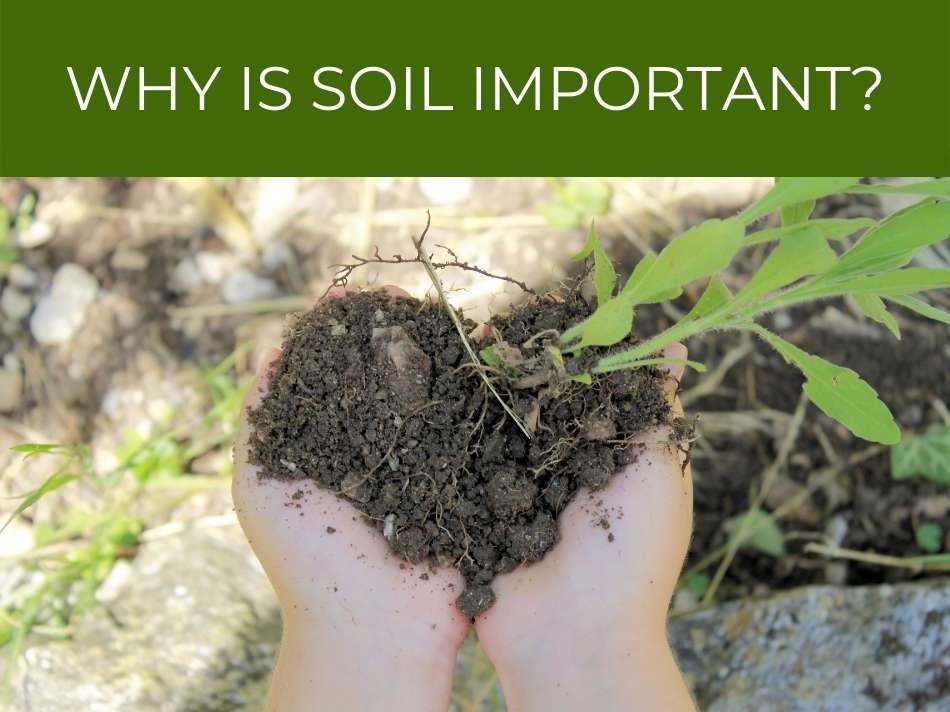
Why is soil important?
Soil is important because it provides nutrients for nearly all plants, & an anchor for the plant. Soil also acts as a sponge to hold water, reducing the likelihood of flooding. Soil also provides habitat for organisms that break down dead plant matter to recycle nutrients.
The roots of most plants spread downwards into the soil, providing support for the plant.
Like any structure, plants need a good, solid foundation and soil is a strong, solid substance, in which the roots of plants can take hold.
The roots spread outwards and downwards through the gaps in the soil to form the solid base for the plant.
The gaps between the granules in soil also allow water and nutrients to flow to the plant through them.
The roots absorb water and nutrients as they penetrate into the soil.
Check out the complete article on why soil is important.
Along with photosynthesis, it is the soil that is very important to the survival and growth of a plant.
See what the soil type is in tropical rainforests.
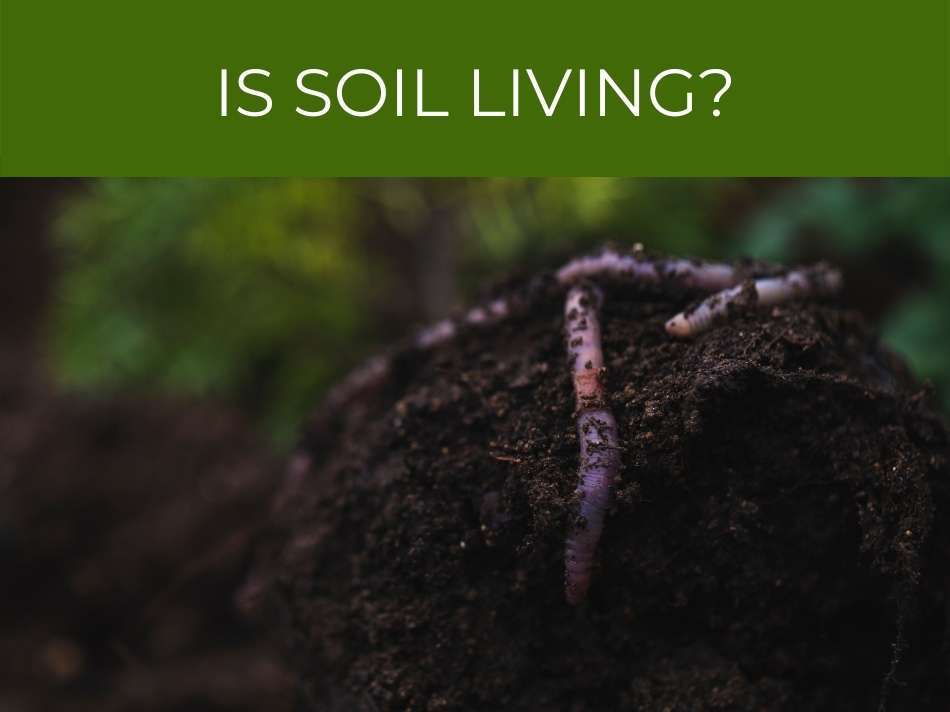
Is soil living?
Soil itself is not living, but contains multitudes of organisms, including insects, worms, bacteria, & other microbes. These organisms feed on dead plant matter, which makes nutrients available to other plants, & increases the ability of soil to absorb water.
Soil itself is not living, although it does contain living elements.
Most of the soil is inorganic matter and non-living things like minerals and nutrients.
However, because soil also contains microscopic living organisms and is ever-changing, it can be considered to be a living system.
Soil can often give off an odor, because of the organisms it contains, which helps it to appear that it is living.
See the full article on weird smelling soil, its causes, & how to make it smell better.
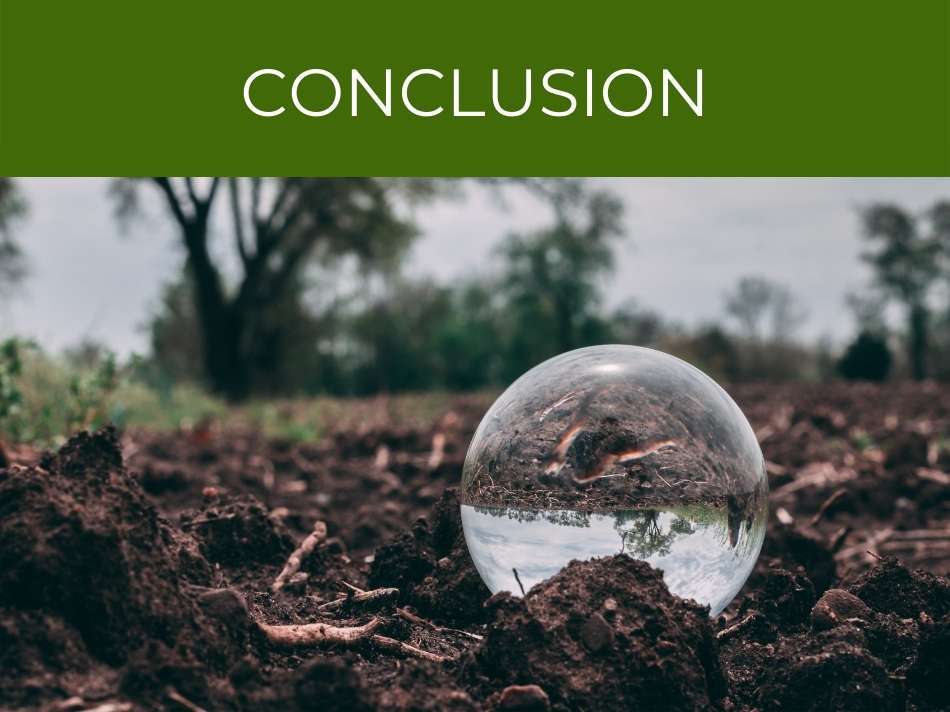
Conclusion
Soil is important for plants because it is a source of water and nutrients and gives the roots something to anchor in. Hydroponics is an alternative growth system, which lets plants grow in water only. For most plants, soil is still one of the most important factors in their growth.

